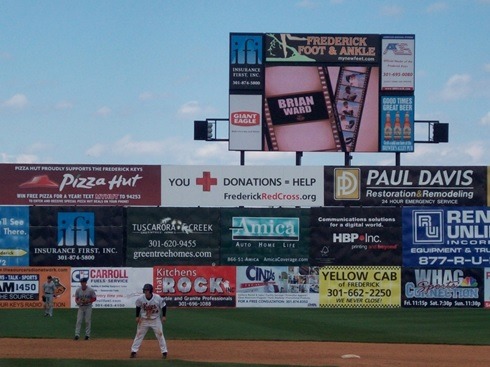As many industries grapple with monetization strategies in the digital space – including radio, of course – conversations still revolve around the lowly banner ad. As most of us recall, that’s how web revenue was originally conceived – placing mini-billboards (and skyscrapers and other devices) around our websites in the hope that web surfers (as they were called back then) would click on one of them and take action.
As we now know from experience, the banner ad may have been a logical way to start the process of digital revenue generation, but it has simply not worked. Click-thru rates rapidly revealed that few truly act when they see these banner ads, assuming they see them in the first place. It’s even worse on smartphones.
A recent article in The New York Times’ Personal Tech section by Farhad Manjoo spelled out the current health of this web advertising vehicle with this headline:
“Fall of the Banner Ad: The Monster That Swallowed The Web”
 Manjoo points out that banner ads have been replaced by mobile and social apps that look good, load faster, and are better integrated in the ways that we use various platforms. Now many reading this may claim they’ve never consciously seen an ad on Facebook, much less acted on one. But clearly, pre-rolls, integrated ads, and other targeted web messaging have become more strategic, noticeable, and useful in recent years.
Manjoo points out that banner ads have been replaced by mobile and social apps that look good, load faster, and are better integrated in the ways that we use various platforms. Now many reading this may claim they’ve never consciously seen an ad on Facebook, much less acted on one. But clearly, pre-rolls, integrated ads, and other targeted web messaging have become more strategic, noticeable, and useful in recent years.
The mobile web is spawning many different advertising variations that integrate apps, programming, and geo-location to create a more useful model that provide consumers with choices. As we know from our own experience on websites, apps, and social spaces, the opportunity to seek out more information about a product, service, or promotion is more congruent with the way we use digital media.
And products from XAPP Media to Clip Radio help connect the dots for advertisers and consumers, and “digital dashboards” add that element of location and proximity. Bob Kernen wrote about “beacons” in a recent JacoBLOG, yet another way that marketers and consumers are using connective technology to benefit one another.
In a post last month, UK radio futurologist, James Cridland, wondered why U.S. radio websites had to look so cheesy, pointing out that banner ads may not be the best way to monetize digital assets. James pointed to Absolute Radio’s new site as a viable alternative to the way that broadcasters approach web monetization here in the States.
And in the process of talking about it on Facebook, I posted this picture of a minor league baseball park – a visualization that is sadly reminiscent of many American radio station sites: cluttered, ugly, distracting, and ultimately, ineffective for the customers who have chosen to be a part of a team’s (or a brand’s) experience.
Last week, we showcased Mike Dougherty’s Jelli project that is attempting to bring “programmatic buying” to radio. The same experimentation and innovation that is so necessary on the programming side of the ledger is a must for sales and marketing departments at stations.
Relying on seemingly endless clusters of commercial after commercial, prize wheels, and web and mobile banner ads isn’t just old school. These aging tools fall short in delivering the value of our brands to our advertisers. Integrated programs that provide deliverables to clients are the pathways to better utilizing the true power of radio – it’s over the air product, as well as its digital assets.
Instead of convention panel after panel talking about the advertising climate, some “climate change” for radio would be so much more productive.
As a medium, we have to do a better job of effectively connecting our advertisers to our brands especially in the mobile space.
Banner ads aren’t the way.
- What To Do If Your Radio Station Goes Through A Midlife Crisis - April 25, 2025
- A 2020 Lesson?It Could All Be Gone In A Flash - April 24, 2025
- How AI Can Give Radio Personalities More…PERSONALITY - April 23, 2025





If click-throughs are your only goal, banner ads may be useless. However, if your goal is simply building a brand, a cool banner with lots of motion and cool graphics can work great. Potential clients probably won’t click through to a website but they may remember the brand. At the very least, when contacted via phone the potential client will have some idea who you are and why you are calling. Check out this banner for Notorious90s: avdeli.com
Good point, Joe. For branding, there may be benefit. But so much off the banner ad activity has been about click-throughs. Thanks for the comment and for reading our blog.